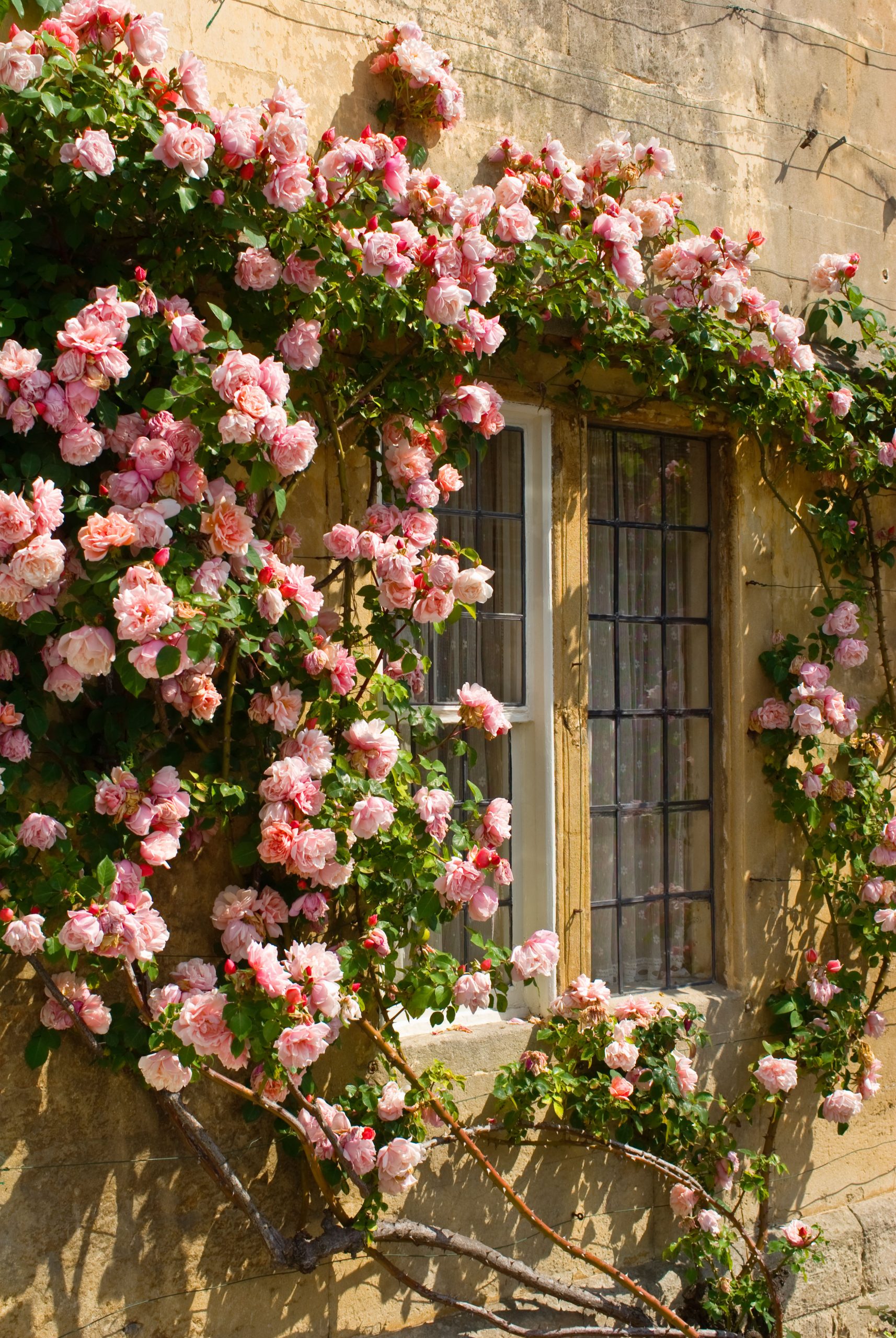The rose variety that's ridiculously easy to grow: 'Stuff some cuttings into the soil and two years later, they'll be flourishing'
Rose expert Charles Quest-Ritson on the delights of the rambling rose.


In the village where I grew up, all the cottages grew the same pink rambling rose against their walls. Blowsy, prickly and very sweet scented, my grandmother told me that its name was ‘Albertine’, a Wichurana Rambler introduced in France in 1921, the year my father was born.
But why did everyone grow the same variety? The answer is because it was so easy to propagate: stuff 10 cuttings into the soil in autumn and, two years later, you have 10 flourishing rambling roses. Cuttings passed willingly between neighbours until everyone had a specimen or two to cover their walls.
But ‘Albertine’ wasn’t the only rambling rose to spread from cottage to cottage. Other villages have different varieties that were equally as popular because they are no less easy to grow. I know a village in Sussex where every house has sweetly musky, white-flowered ‘Albéric Barbier’. My wife grew up in the middle of Salisbury Plain, where the houses were wreathed in late-flowering crimson ‘Excelsa’ and there are many villages where the dominant rambler is pretty pink ‘Dorothy Perkins’ or pink-and-white ‘American Pillar’. If you ask the present-day owners for the name of their rose, they seldom know the answer, although ‘Village Maid’ is a catch-all that I come across from time to time.
Many of those ancient plants — most were grown from cuttings more than 100 years ago — are flourishing still. The owners are country people and they attend to their rambling roses every winter. They climb up a ladder; they prune; they tie in the growths. But when the owners get too old to manage, their children put the cottage up for sale to pay for the nursing-home fees. Then it is bought by a young couple from London who want to live in the country. What will happen to the roses?
The townies have better things to do in their leisure hours than struggle with a prickly Leviathan. Out comes the ancient rambler and in goes a blowsy beauty from David Austin. Is there a problem of conservation? Yes, in the sense that the village begins to lose its character, but also no, because those ancient ramblers are still very widely grown all over Britain and Ireland.

Rambling roses enjoyed a bull market between 1900 and 1940. Their vigour and their eagerness to please were a revelation. The need to give the rambling roses something over which to drape their loveliness initiated a revolution in Edwardian garden design. Well-to-do gardeners constructed pergolas, bowers and arbours for them; cottage gardeners would make a rustic arch of wood for roses to clamber up and over; and the gardeners on large estates spent many winter weeks laboriously thinning them out and tying them down so that, for perhaps one month in high summer, the ladies of the house in long, lace-edged cotton dresses could wander underneath the pergola and imagine themselves as lovely as the roses overhead.
Sometimes, reality punctures the romantic daydream. Roses trained along a pergola will reach for the sky — most plants move towards the light — which puts the passer-underneath in the dark, with nothing to admire above their leghorn-hatted heads except the stems and leaves. It soon became clear that a better way of displaying rambling roses was to tie them into trellis-work or to train them along ropes and swing them from post to post. You can see this done to perfection at Queen Mary’s rose garden in Regent’s Park, London, the design of which remains unchanged since it was laid out in the 1930s.
Exquisite houses, the beauty of Nature, and how to get the most from your life, straight to your inbox.

It’s a way of enjoying roses that is simpler to maintain because, if you set your ropes no higher than 6ft, it requires no ladder-work. And you can see the roses easily and get up close and personal to admire and stick your nose in them. In Regent’s Park, the supports are slightly taller and the roses are garlanded along three ropes, set about 2ft apart. I settle for two strands and I even use plastic rope from a ship’s chandler — it’s much cheaper and no one notices.
But I am sorry to see those pretty centennial roses disappear from cottage walls. Ramblers flower earlier than Hybrid Teas and Floribundas and I enjoy driving around country villages at the time of the RHS Chelsea Flower Show, looking for walls of stone, flint or mellow brick simply dripping with roses.
Last year, I passed an old thatched farmhouse in Wiltshire where the patterned walls were covered by a deep-red rose that I did not know. Might I take a photograph? Yes, of course. And isn’t it beautiful? Village Maid, we call it. May I come back in autumn and take a cutting? Yes, please do.
I did and, fortunately, they remembered me. I took the cutting, plus a spare — and both have now made roots and are growing vigorously in my garden. It’s a funny thing, said the owner, but we were thinking of digging it out and planting a David Austin rose instead.
Charles Quest-Ritson wrote the RHS Encyclopedia of Roses.
Charles Quest-Ritson is a historian and writer about plants and gardens. His books include The English Garden: A Social History; Gardens of Europe; and Ninfa: The Most Romantic Garden in the World. He is a great enthusiast for roses — he wrote the RHS Encyclopedia of Roses jointly with his wife Brigid and spent five years writing his definitive Climbing Roses of the World (descriptions of 1,6oo varieties!). Food is another passion: he was the first Englishman to qualify as an olive oil taster in accordance with EU norms. He has lectured in five languages and in all six continents except Antarctica, where he missed his chance when his son-in-law was Governor of the Falkland Islands.
